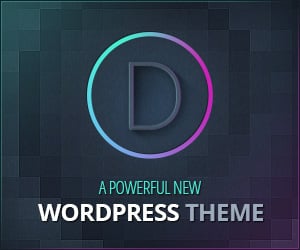Requirements management is one of the integral parts of the success of every project, especially in regulated industries, like healthcare, oil and gas, financial services and trading, etc.
Regulated industries have a lot of requirements to meet, when it comes to delivering high-quality products to both internal and external stakeholders, from collecting and analyzing the data about the product, to refining the product and make it ready for the stakeholders to consume.
Here’s where these industries meet the need for agile technologies and automation.
While these industries are usually represented by big corporations, with sometimes many stakeholders, agile requirements management solutions are the only way to communicate with all of them without interrupting the course of the project.
How to Choose the Best Requirements Management Solution

Illustration by pch.vector/FreePik
Why Simple Microsoft Office Solutions Don’t Work
Sharing a Word or an Excel document with your stakeholders is not an effective way to communicate the requirements.
Requirements management is aimed at collaboration in a transparent environment, which simple Microsoft Office Solutions cannot deliver.
Here’s why:
- Requirements management is data intensive. While Microsoft Word and Excel are designed to contain big volumes of data, they don’t provide tools to coordinate and analyze this data.
- Requirements management involves data visualization. Quick access to data is key to successful communication between a company and stakeholders. Microsoft Office provides only basic solutions for data visualization in this case.
- Traceability is crucial for requirements management. To understand what processes will lay the foundation of the end result, it is important for both the company and its stakeholders to be able to trace all the requirements and data changes. This is a feature that Word and Excel cannot deliver.
Ultimately, both a company and its stakeholders should look for a good collaboration tool beyond basic computer programs. Thus, there is a need in agile requirement management solutions, which would be able to hold big data, visualize it, and make it traceable, while also supporting the communication with stakeholders effectively.
How to Choose the Requirements Management Solution?
While there are plenty of options for requirement management software on the market, not all of them suit the criteria mentioned above.
Here are the most crucial features that you should pay attention to when choosing the best requirements management solution.
1. Search for a Free Trial Option
Industry leaders are careful with what they spend their money on. Especially when it comes to agile requirements management solutions, which should meet certain expectations. Moreover, industry leaders value their time and having a requirements management solution that they don’t like even for a month can cost them a lot of money.
That’s why the first thing you should be looking for in a requirements management solution is a free trial that will let you test its basic features before purchasing the whole package.
These basic features should include communication tools, data and requirements traceability tools, as well as report generation. A 7-14-day trial would be enough for you to estimate the effectiveness of the requirements management solution.
2. Make Sure The Solution Fits Your Industry
A functional requirements management solution should take into account the specifics of different industries. Every industry has its own way to tackle requirements management, hence, it has different expectations for a requirements management solution.
Consequently, when choosing a requirements management solution for your company, make sure that you can receive information on why this solution fits your industry directly from the credible source.
For instance, one of the primary challenges for the automotive industry, that a good agile requirements solution would help solve, would be establishing effective validation and verification procedures in document traceability.
For the medical devices industry, for instance, the primary challenge would be also dealing with complex product lines, apart from ensuring the traceability of requirements.
Thus, the choice of a requirements management solution would depend on how well it fits the demands of the industry.
It is also a sign of a good requirements management solution when it can provide use cases and industry reports:
Company executives often use case studies as the factor to identify the best agile solution. In our study, we found that 8 out of 10 company executives would read the documentation, such as case studies and white papers, when estimating the effectiveness of a technological solution.
You should be able to access this information on the website of the requirements management solution or via the marketing team.
3. Choose the Solution that Offers External Traceability
When searching for a good agile requirements management solution, watch out for the traceability feature.
All requirements management solutions have traceability. Most of the packages they offer, however, include only internal traceability.
What does it mean?
Internal traceability only maps the requirements to use cases and test cases within the project. It only presupposes tracing and managing the data available within this solution, that is, which you upload into it.
The real value of a good requirements management solution, however, is external traceability, which means that the solution has access to the data outside of it, such as guides, manuals, and other documents, which have an effect on the end result.
External traceability involves many features, one of which is compatibility with Microsoft Office and other integrations that ensure the access of the solution to external documentation:
External traceability is crucial for requirements gathering as well as the complete end-to-end requirements traceability and report generation. It ensures full compliance with all requirements, both internal and external.
4. Ensure There Are No Limitations in Communication
When choosing a requirements management solution, one of the most important criteria you should be looking for is whether this solution ensures effortless and transparent communication among stakeholders.
One of the issues that may arise is the lack of localization to other languages, which may be a problem if you have stakeholders from different countries.
Not only should the solution itself offer a variety of languages for the clients, but its website should also provide complete information on the solution in the same number of languages.
What Are You Looking For in a Requirements Management Solution?
It is important for a company to have access to agile technology that will help with process automation. Requirements management is no exception. It involves a lot of communication and collaboration, as well as access to big volumes of data, which should be easily accessible and traceable.
Hopefully, our tips will help you select the requirements management solution that works best for the needs of your business, for the benefit of your product and your stakeholders.

Nicole D. Garrison
Copywriter, content creator, editor
Nicole Garrison is a copywriter, content creator and, an editor at TrustMyPaper and Studicus. She mostly writes articles on marketing and management, as she has a Master’s in Enterprise Management. In her free time, she also contributes articles about agile technologies. You can find them on Supreme Dissertations and Wow Grade.













0 Comments